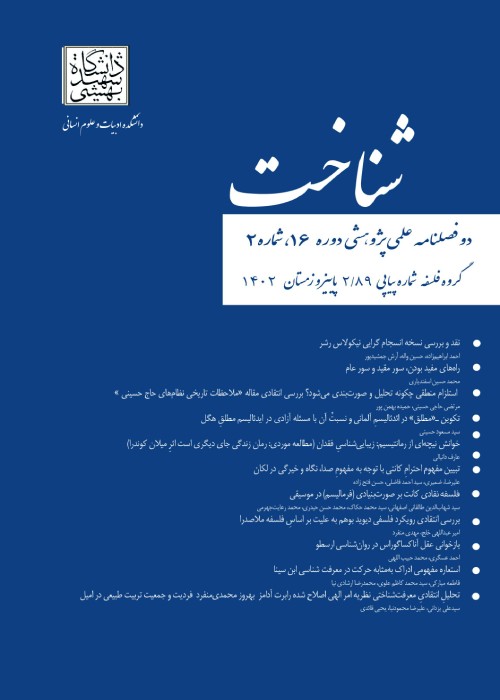Michel Henry's Phenomenological Reading of “Pathos”
The main question is what is pathos and what can it have to do with art? Pathos is one of the concepts that is very important in Aristotle's thought. To the extent that contemporary researches emphasize the importance of the pathos and its fundamental role in the reading of Aristotle's thought. Heidegger was one of the first scholars to pay attention to Pathos in contemporary times. Subsequently, the French phenomenologist Michel Henry has been critical of Heidegger in his relation to Heidegger, and the theoretical origins of this article are rooted in Henry's ideas about Pathos. Michelle Henry has a critical reading of Heidegger and Husserl and calls his phenomenology "Phenomenology of life." He believes that real life is invisible and the secret meaning of life is as a pathos that can only be experienced within. According to Henry, art, especially abstract art, has been able to show this invisible meaning. Unlike Heidegger, he places the essence of art in life, not in the world. In other words, he views the task of art not as an external exposition of the world but an internal expression of the pathos of life. He also sees art as the way to save man from modern worldview. Henry traces the origins of "Pathos" to Greece, but the meaning he derives from it differs from its conventional historical view. In Henry's reading of Pathos, the pain and suffering that comes with Aristotle's work becomes the idea of liberation and pleasure. That is to say, contrary to the popular perception that it has the destructive effect of Pathos and also the "suffering", it does not necessarily have a destructive effect on Henry Pathos and can lead to emancipation. That is, Pathos makes something come true.In the end, he views Pathos as a pain and pleasure that liberates and promotes it and places it at the center of human life, believing that some works of art can best represent it. Henry reminds us that the origin is the work of art, not the world. In other words, for Henry it is the task of the art of expressing the inner pathos of life rather than as Heidegger thought of " disclose the exteriority of the world". For this reason, for an artist like Kandinsky, Henry is someone who looks at the world and phenomena more deeply than other peer-reviewed artists and can reflect on the inner experience in his work. In the end it can be said that the distinguishing feature of Henry's reading of the concept of "pathos" is that it can show the power of the artwork. Because, according to this reading, the work of art reveals what lies in the visible world and forces the audience to look deeper into the world.
- حق عضویت دریافتی صرف حمایت از نشریات عضو و نگهداری، تکمیل و توسعه مگیران میشود.
- پرداخت حق اشتراک و دانلود مقالات اجازه بازنشر آن در سایر رسانههای چاپی و دیجیتال را به کاربر نمیدهد.


